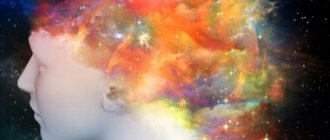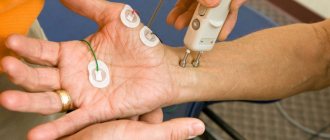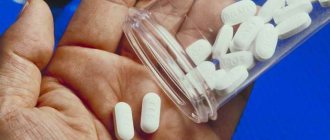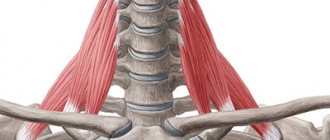Serotonin syndrome (serotonin intoxication) is a rare but potentially fatal reaction of the body to taking medications or drugs that increase serotonergic transmission. It can occur as a result of poisonings, medications (most commonly with antidepressants), an adverse reaction to a combination of medications or drugs, or the recreational use of certain drugs. It often occurs when two or more drugs are used - for example, the combination of SSRI and MAOI antidepressants leads, according to some data, to serotonin syndrome in almost half of patients.
Clinical picture
The clinical manifestations of serotonin syndrome include symptoms of three groups: mental, autonomic and neuromuscular disorders.
Changes in mental status: agitation, anxiety, delirium, euphoria, mania, hallucinations, confusion, mutism, coma.
Symptoms of autonomic dysfunction: abdominal pain, diarrhea, hyperthermia (from 37-38 ° C to 42 ° C and above), headaches, lacrimation, dilated pupils, nausea, tachycardia, tachypnea, fluctuations in blood pressure, chills, increased sweating.
Neuromuscular disorders: akathisia, bilateral Babinski's sign, epileptiform seizures, hyperreflexia, incoordination, myoclonus, horizontal and vertical nystagmus, oculogyric crises, opisthotonus, paresthesia, muscle rigidity, tremor.
At the initial stage, serotonin syndrome manifests itself mainly from the gastrointestinal nervous system: dyspeptic symptoms are characteristic (seething, abdominal cramps, flatulence, loose stools, nausea, less often vomiting, etc.); extrapyramidal disorders (tremor, dysarthria, restlessness, muscle hypertonicity), hyperreflexia, myoclonic twitching, usually starting in the feet and spreading throughout the body.
As the condition worsens, a patient with serotonin syndrome develops a manic-like state, manifested by racing thoughts, accelerated slurred speech, sleep disturbances, hyperactivity, and less commonly, confusion and symptoms of disorientation. At its last stage, with an extremely rarely observed malignant variant of the course (possible with a combination of SSRIs and MAOIs), serotonin syndrome is close to the clinical picture of neuroleptic malignant syndrome: a sharp increase in temperature, profuse sweating, a mask-like face, greasiness of the face, as well as acute cardiovascular disorders which can be fatal.
Dangerous complications of serotonin syndrome also include disseminated intravascular coagulation syndrome, rhabdomyolysis, myoglobinuria, renal, hepatic and multiorgan failure, metabolic acidosis, leukopenia, thrombocytopenia, and tonic-clonic convulsions. Myoclonus affecting the pectoral muscles can also lead to death due to asphyxia or hypoxia.
Pathophysiology
Serotonin syndrome is based on excessive activity of central serotonergic structures: predominantly postsynaptic 5-HT1A receptors, but its development is also facilitated by stimulation of 5-HT2 receptors due to the accumulation of serotonin in the synapse. There is also evidence that hyperactivation of noradrenergic structures may also play a critical role in the occurrence of serotonin syndrome. The role of other neurotransmitters is significantly less: glutamate and GABA; The influence of dopaminergic structures on the pathogenesis of serotonin syndrome is also detected, due to pharmacodynamic interactions, direct interaction between serotonergic and dopaminergic structures, or in connection with other mechanisms.
Serotonin and its syndrome
Serotonin is often called the hormone of happiness for the reason that its levels rise during moments of euphoria and ecstasy, and decrease during depression.
However, the body does not require the hormone serotonin to maintain a good mood; it also has other functions:
- regulates the emotional component,
- provides the opportunity for healthy sleep,
- responsible for the presence of appetite,
- regulates memory and learning abilities,
- affects the production of melanin.
Melanin is a compound that is responsible for skin pigmentation, hair color, and more. Also, it is responsible for the rate of aging and can lower blood glucose.
Important! Melanin is extremely important for travelers - it allows the body to adapt to changing environmental conditions.
An insufficient amount of serotonin in the body reduces resistance to stress factors and leads to depression.
If its content is insufficient, certain medications (antidepressants) are prescribed. However, with a long period of their use, as well as when the permissible dosage is exceeded, seretonin syndrome develops.
Serotonin syndrome is an excess of serotonin in the synaptic cleft (a certain distance between the membranes of a pair of neurons) or due to overexcitation of serotonin receptors located on the membrane of neurons.
Common serotonin disorder syndrome has three groups of characteristic manifestations:
- psychical deviations,
- neuromuscular abnormalities,
- manifestations of vegetative changes.
Diagnosing serotonin syndrome at this stage of development of medical science is possible solely according to clinical signs.
No laboratory or instrumental techniques have been developed to confirm the presence of serotonin syndrome.
There are no reliable statistics on the number of cases of this syndrome in the Russian Federation. There are only approximate data that may not fully correspond to reality for the following reasons:
- People with signs of serotonin syndrome do not always seek help from doctors.
- When there are signs of serotonin syndrome, doctors do not always make this diagnosis.
- It is impossible to prove the presence of serotonin syndrome using laboratory methods.
- Drugs can cause this reaction in the body. But a diagnosis that would indicate that the syndrome appeared because of them is even rarer.
The use of antidepressants, as well as some narcotic drugs, can lead to a disruption of the serotonergic system and a day after the start of use, a serotonin failure occurs.
It occurs due to the fact that the body experiences serotonin deficiency after an excess of its amount the day before.
Prevalence
In 2002, the US Toxicity Screening System compiled data on 26,733 SSRI prescriptions, which resulted in serious toxic effects in 7,349 people, including 93 deaths. Finding out exact epidemiological data on the prevalence of serotonin syndrome is difficult due to the fact that about 85% of doctors are unfamiliar with this pathology and therefore rarely make this diagnosis.
Serotonin syndrome often occurs in elderly patients, children and even infants. It has also been found that it occurs in 14-16% of people with an SSRI overdose.
Risk factors for developing serotonin syndrome
The greatest risk of developing serotonin syndrome is observed in patients taking combination therapy with serotonergic agents, elderly patients, and individuals with impaired renal or hepatic function.
Also, the risk of developing serotonin syndrome increases with heavy physical activity and dehydration.
Diagnostics
There are no specific laboratory tests, the data of which could be used in the diagnosis of serotonin syndrome; laboratory tests are important only for diagnosing complications (metabolic acidosis, disseminated intravascular coagulation syndrome, rhabdomyolysis) and monitoring the patient. Determining the concentrations of serotonergic drugs in the blood plasma does not play a significant role, since in most cases of serotonin syndrome they do not exceed the permissible level, and their presence in toxic concentrations is not a prerequisite for its development.
Sternbach proposed the following criteria for diagnosing serotonin syndrome:
- At least 3 of the following symptoms are associated with the initiation of therapy with a serotonergic drug, or an increase in its dose, or the addition of another serotonergic drug: agitation, hyperreflexia, diarrhea, increased sweating, mental status changes (confusion, hypomania), fever, myoclonus, disturbances coordination, tremendous chills, tremors.
- Other possible causes have been excluded - infections, metabolic disorders, drug intoxication, withdrawal syndrome, etc.
- Immediately before the onset of symptoms, the patient was not prescribed an antipsychotic drug or, if previously prescribed, its dose was not increased.
Differential diagnosis
Differential diagnosis of serotonin syndrome must be carried out with such conditions as neuroleptic malignant syndrome, malignant hyperthermia, febrile schizophrenia, anticholinergic delirium, acute psychosis, somatic symptoms of depression, heat stroke, meningitis, encephalitis, hyperthyroidism, hypertensive crisis, septicemia, “rigid man” syndrome , tetanus, various intoxications (anticholinergics, amphetamines, lithium, LSD, cocaine, MAOIs, phencyclidine, salicylates, strychnine, sympathomimetics).
Serotonin syndrome - treatment
For reference. First of all, it is necessary to discontinue all serotonergic drugs that the patient is taking. After discontinuation of the drugs that caused serotonergic syndrome, symptoms usually subside quickly and completely disappear within 6-12 hours (residual manifestations may subside throughout the day).
Symptomatic therapy and treatment of complications are also provided. All treatment must take place in a hospital setting.
In case of mild serotonergic syndrome, only drug withdrawal (without additional therapeutic measures) may be sufficient. In the first hours of the development of the syndrome, enterosorbents (including activated carbon) can be used.
In severe serotonin syndrome, drugs with anticholinergic and antiserotonergic effects (methysergide, cyproheptadine) are prescribed. The most effective is the use of cyproheptadine.
If necessary, some atypical antipsycholytics (olanzapine, resperidone) or chlorpromazine can be used. However, these drugs should be used with extreme caution, after 100% exclusion of neuroleptic malignant syndrome in the patient.
It is prohibited to prescribe propranolol, bromocriptine and dantrolene for the treatment of complications, as they can sharply worsen the patient’s condition.
Benzodiazepines (Sibazon, Lorazepam) are used to relieve cramps, muscle rigidity and excessive mental agitation.
Paracetamol is prescribed to reduce the temperature. If necessary, muscle relaxants are used.
Also, infusion therapy (droppers) is prescribed to relieve intoxication and replenish fluid loss.
Causes and prevention
The main principle of prevention: limit the use of serotonergic drugs in combination therapy and carefully monitor the patient's condition during its use. It is also necessary to monitor the patient's condition during periods when a new drug is included in the regimen or the dose is increased. In particular, the combination of MAOIs and SSRIs, MAOIs and clomipramine should be avoided. One of the principles of prevention is also compliance with the recommended dosages and regimen of taking antidepressants.
A break of at least two weeks is required:
- in the interval between the abolition of fluoxetine (Prozac) and the appointment of an SSRI;
- between discontinuation of SSRIs and administration of other serotonergic agents;
- between discontinuation of SSRIs and administration of MAOIs.
An interval of at least five weeks is required between the discontinuation of fluoxetine and the appointment of an irreversible MAOI, for elderly patients - at least eight.
When transferring from irreversible MAOIs to SSRIs, a break of four weeks should be maintained (according to other sources - two weeks); When switching from moclobemide to SSRIs, 24 hours is sufficient.
After treatment with clomipramine, you must wait three weeks before prescribing other serotonergic drugs.
The duration of the withdrawal period depends on the length of the half-lives of the drugs. The withdrawal period is at least five half-lives, but this is the minimum recommended withdrawal period. The long half-life of fluoxetine and its main active metabolite, norfluoxetine, may pose significant challenges to clinical use.
In addition, serotonin syndrome has been observed:
- when taking SSRIs or MAOIs together with cold medications containing dextromethorphan, which can inhibit serotonin reuptake, SSRIs or MAOIs with meperidine, tramadol, with nefazodone, with herbal antidepressant drugs containing St. John's wort, with 5-hydroxytryptophan and tryptophan;
- co-administration of SSRIs with opioid analgesics, S-adenosylmethionine (SAM, heptral), metoclopramide, trazodone, clomipramine, amitriptyline, buspirone, anti-migraine drugs, levodopa;
- combined use of MAOIs with cyclic antidepressants, venlafaxine, specific serotonergic antidepressants, methylenedioxymethamphetamine (MDMA, “ecstasy”);
- combined use of the following antidepressants: imipramine and moclobemide, trazodone and fluoxetine, trazodone and buspirone, venlafaxine and tranylcypromine, venlafaxine and phenelzine, fluoxetine and selegiline (at high doses of selegiline - over 10 mg/day);
- combined use of an antidepressant and mood stabilizer: SSRI and carbamazepine, SSRI and lithium, MAOI and lithium;
- co-administration of SSRIs and drugs that affect the metabolism of SSRIs (inhibiting CYP2D6 and CYP3A4 isoforms of cytochrome P450);
- co-administration of tramadol and antidepressants of many groups (including SSRIs).
There are isolated reports of the occurrence of serotonin syndrome during monotherapy with SSRIs (at the beginning of treatment, with a sharp increase in dosage, or during intoxication), as well as during monotherapy with clomipramine or trazodone.
Serotonin syndrome is also possible when taking opioid analgesics, cough suppressants, antibiotics, weight loss drugs, antiemetics, migraine drugs, etc.
Causes
Most often, the appearance of serotonin syndrome is associated with excessive use of antidepressants.
In addition, the cause of the disease may be:
- simultaneous use of several medications that increase the content of serotonin in the body;
- abrupt transition from one antidepressant to another;
- drinking alcoholic beverages together with antidepressants;
- simultaneous use of antidepressants with drugs that normalize body weight, antitussives, antiemetics, antibacterial agents, and so on;
- taking narcotic substances.
Serotonin syndrome can occur in people of all ages when taking antidepressants. Both pensioners and newborn children can get this disorder due to intrauterine exposure.
People with cardiovascular disease and dehydration are more likely to suffer from serotonin syndrome. Also at risk are people who have intolerance to a certain drug containing serotonin, chronic or acquired liver and kidney disease, or physical overload of the body.
Treatment
No special therapeutic measures have been developed for serotonin syndrome; recommendations regarding its treatment are based on individual case reports. Discontinuation of all serotonergic drugs is the first and main measure for serotonin syndrome, which in most patients leads to a rapid decrease in symptoms within 6-12 hours and to their complete disappearance within 24 hours (in the case of fluoxetine, a more protracted course of several days is possible) .
Other necessary measures are symptomatic therapy and individual care. In severe cases, prescribing serotonin antagonists (cyproheptadine, methysergide); detoxification therapy and other measures aimed at maintaining homeostasis. Paracetamol and external cooling are used to lower body temperature; when body temperature rises to 40.5 C, which indicates a threat to the patient’s life, intensive external cooling, endotracheal intubation with transfer to artificial ventilation and the introduction of muscle relaxants should be used to prevent the occurrence of rhabdomyolysis and disseminated intravascular coagulation. Benzodiazepines (eg, lorazepam) may be used to reduce the muscle rigidity associated with serotonin syndrome and the hyperthermia it often causes. Benzodiazepines can also be used to control agitation; physical restraint should be avoided in serotonin syndrome. For hypertension, direct sympathomimetics in small doses (adrenaline, norepinephrine) are used to maintain normal blood pressure.
The use of propranolol, bromocriptine and dantrolene should be avoided as these drugs may worsen the condition of patients with serotonin syndrome, causing severe side effects and leading to increased mortality. Data regarding the beneficial effects of bromocriptine and dantrolene appear to be the result of misdiagnosis of serotonin syndrome in disorders caused by other causes.
In mild cases (with the presence of hyperreflexia and tremor, but without fever), serotonin syndrome is observed within 24 hours after starting therapy and stopping the drug, but some symptoms may persist for a longer time: this depends on the half-life of the active substance and its active substances. metabolites. Typically, supportive care, including intravenous fluids, vital signs, and benzodiazepines to reduce agitation, is sufficient. However, even such mild patients require supervision due to the possibility of a sudden deterioration in their condition with the need for intensive care.
Speed of development and duration
Serotonin syndrome develops rapidly when taking antidepressants. The first symptoms can be observed a few minutes after using the drug that provokes the syndrome. They also occur within a few minutes after switching to another drug or changing the dosage of the drug.
According to statistics, in 50% of patients the development of the disease occurs within the first 2 hours. In 25% of cases, people develop serotonin syndrome within 24 hours.
Another 25% of those taking medications containing serotonin develop illness within a day. Some patients are at risk of death. Timely medical care will help reduce the rate of development of the syndrome.









